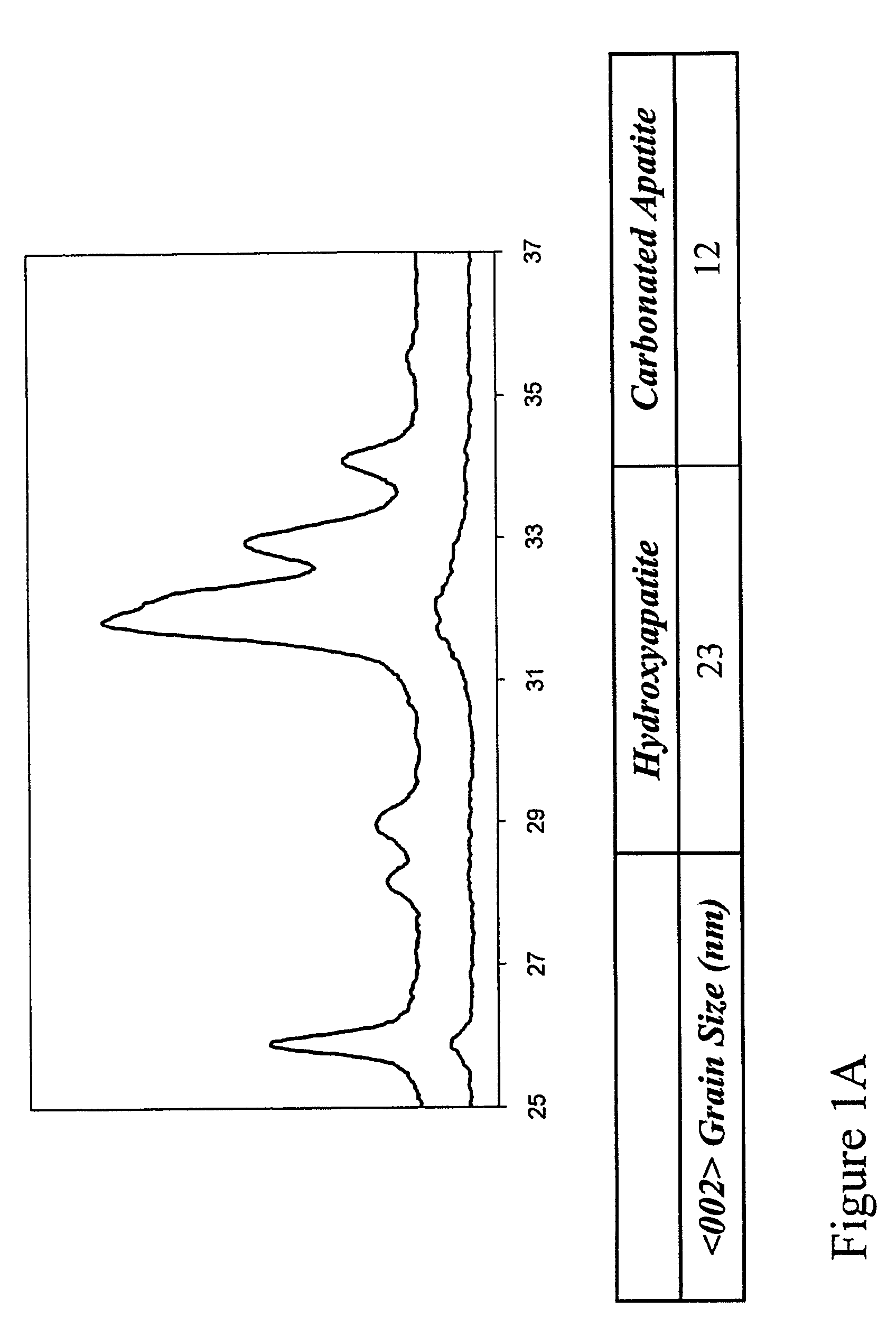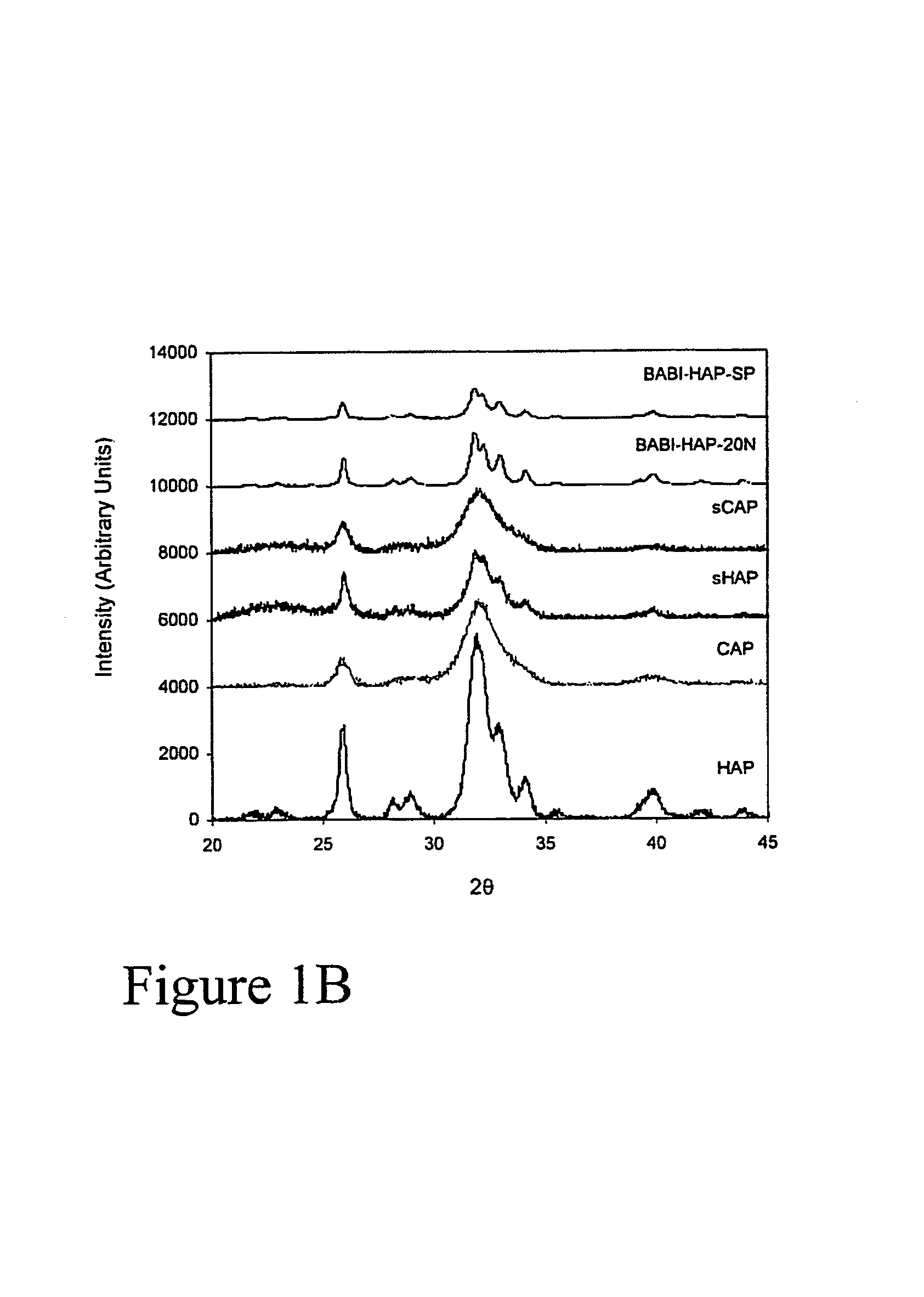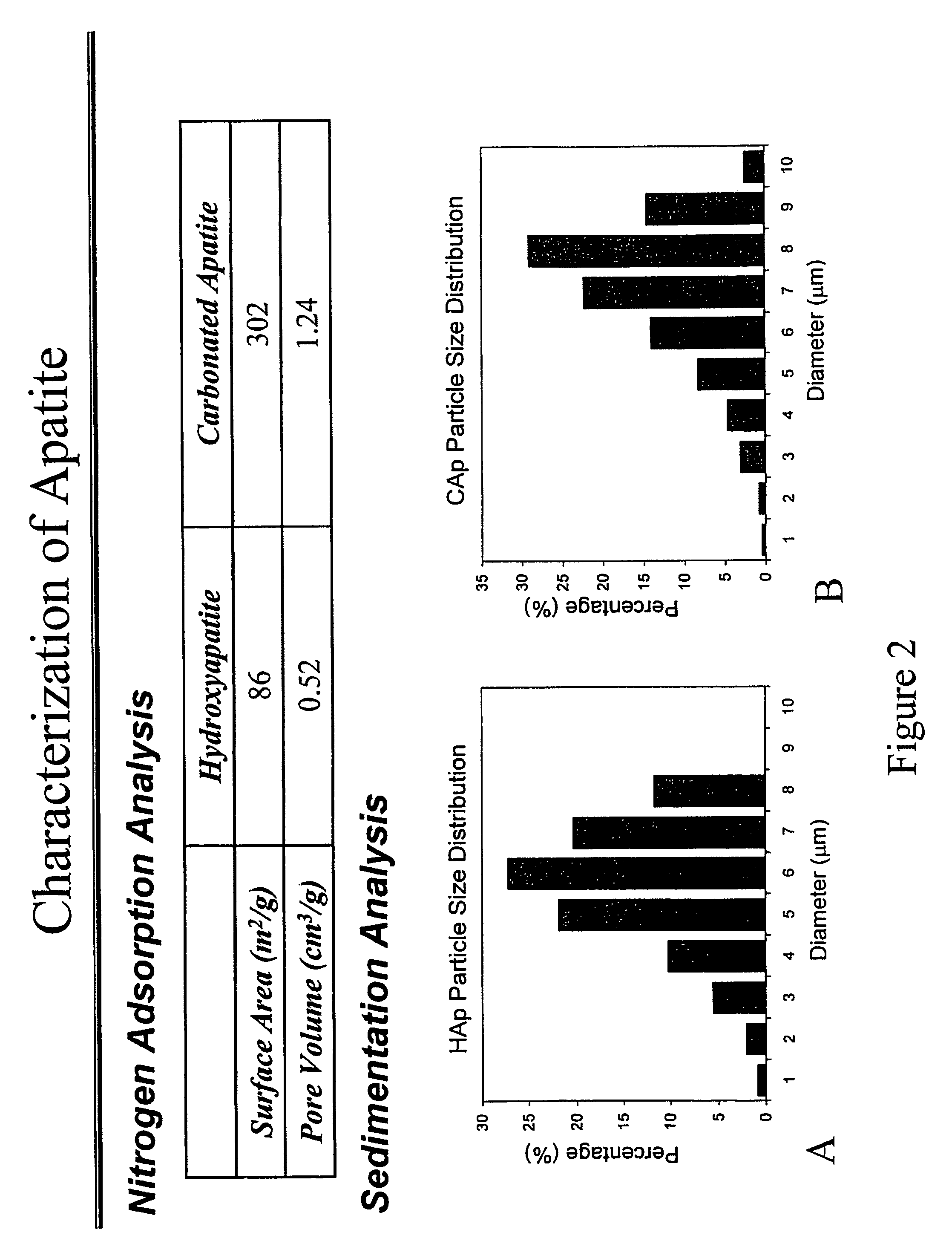Composite materials for controlled release of water soluble products
a technology of compound materials and water soluble products, applied in the field of compound materials, can solve the problems of poor encapsulation efficiency, low encapsulation efficiency, and limited encapsulation via water-in-oil-in-water or oil-in-oil (o/o) emulsion process limitations
- Summary
- Abstract
- Description
- Claims
- Application Information
AI Technical Summary
Benefits of technology
Problems solved by technology
Method used
Image
Examples
example 1
Construction of and Parameters Affecting Apatite-Polymer Composite Particles
[0158]Preparation of HAP and CAP yielded approximately the same particle size. XRD analysis of HAP and CAP (FIG. 1) demonstrated that CAP is less crystalline than HAP, and possessed a smaller grain size.
[0159]The preparation of apatite by chemical precipitation resulted in the formation of a pure apatitic phase, as evaluated by XRD (FIG. 1). Characteristic apatite peaks occur at 25.88° (002 plane) and 32.90° (300 plane). Calcination of HAP led to higher crystallinity, as indicated by the sharper and narrower peaks, though approximately the same particle size is seen (FIG. 1A). BABI-HAP-SP and BABI-HAP-N20, which were obtained from commercial sources, appeared crystalline and CAP, sCAP, and sHAP, which were prepared without calcination, were more amorphous (FIG. 1B).
[0160]The grain size of HAP was the highest among the apatites synthesized (Table 1.1). BABI-HAP-SP and BABI-HAP-N20, which were obtained from co...
example 2
Release Kinetics are a Function of Microparticle Composite Composition
[0183]Microparticle protein release is a function of microsphere preparation. PLGA microspheres prepared via a water-in-oil-in-water emulsion method showed a high initial burst, with a sustained release, while composite PLGA-apatite microspheres prepared via a solid-in-oil-in-water method exhibit a low initial burst, with release kinetics approximating that of zero-order (FIG. 5). Apatite particles adsorbed with BSA show little release in comparison.
[0184]The molecular weight of a biodegradable polymer influences its degradation rate and lifetime. As molecular weight increases, degradation becomes slower and longevity is extended. Apatite-polymer composite particles were prepared from PLGA of different molecular weights ranging from 6 kD to 59 kD. The onset of the accelerated phase of protein release was observed to occur at different times depending on the molecular weight of the polymer used (FIG. 6A). For parti...
example 3
Manipulation of the Polymer Influences Protein Release Rates
[0187]In order to determine what contribution the properties of the polymer play in protein release, composite particles were synthesized from blends of PLGA (50:50 copolymer) and poly (lactic acid) (PLA), which were measured for their rate of protein release. Lactic acid (LA) contains a methyl group that augments its hydrophobicity relative to glycolic acid (GA), hence, PLA is more hydrophobic. Because it is a homopolymer, PLA is also more crystalline than PLGA, which is a random copolymer of LA and GA. An increase in polymer hydrophobicity would delay water penetration, polymer degradation and acid production, and consequently, reduce protein release. This parameter could be varied by using different types, blends, or compositions of polymers. For example, the LA to GA ratio in PLGA could be varied to obtain a range of hydrophobicities and degradation rates. Increased proportion of PLA in the composite particles decreased...
PUM
| Property | Measurement | Unit |
|---|---|---|
| concentration | aaaaa | aaaaa |
| concentration | aaaaa | aaaaa |
| concentration | aaaaa | aaaaa |
Abstract
Description
Claims
Application Information
 Login to View More
Login to View More - R&D
- Intellectual Property
- Life Sciences
- Materials
- Tech Scout
- Unparalleled Data Quality
- Higher Quality Content
- 60% Fewer Hallucinations
Browse by: Latest US Patents, China's latest patents, Technical Efficacy Thesaurus, Application Domain, Technology Topic, Popular Technical Reports.
© 2025 PatSnap. All rights reserved.Legal|Privacy policy|Modern Slavery Act Transparency Statement|Sitemap|About US| Contact US: help@patsnap.com



